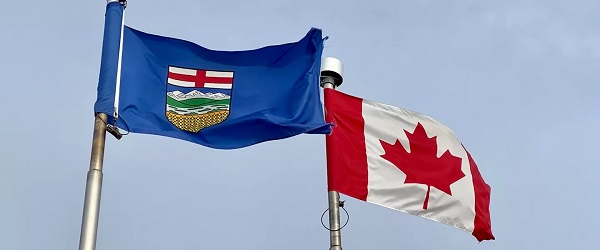Business
Canada’s chief actuary fails to estimate Alberta’s share of CPP assets

From the Fraser Institute
By Tegan Hill
Each Albertan would save up to $2,850 in 2027—the first year of the hypothetical Alberta plan—while retaining the same benefits as the CPP. Meanwhile, the basic CPP contribution rate for the rest of Canada would increase to 10.36 per cent.
Despite a new report from Canada’s chief actuary about Alberta’s potential plan to leave the Canada Pension Plan (CPP) and start its own separate provincial pension plan, Albertans still don’t have an official estimate from Ottawa about Alberta’s share of CPP assets.
The actuary analyzed how the division of assets might be calculated, but did not provide specific numbers.
Yet according to a report commissioned by the Smith government and released last year, Alberta’s share of CPP assets totalled an estimated $334 billion—more than half the value of total CPP assets. Based on that number, if Alberta left the CPP, Albertans would pay a contribution rate of 5.91 per cent for a new CPP-like provincial program (a significant reduction from the current 9.9 per cent CPP rate deducted from their paycheques). As a result, each Albertan would save up to $2,850 in 2027—the first year of the hypothetical Alberta plan—while retaining the same benefits as the CPP. Meanwhile, the basic CPP contribution rate for the rest of Canada would increase to 10.36 per cent.
Why would Albertans pay less under a provincial plan?
Because Alberta has a comparatively younger population (i.e. more workers vs. retirees), higher average incomes and higher levels of employment (i.e. higher level of premiums paid into the fund). As such, Albertans collectively pay significantly more into the CPP than retirees in Alberta receive in benefits. Simply put, under a provincial plan, Albertans would pay less and receive the same benefits.
Some critics, however, dispute the estimated share of Alberta’s CPP assets (again, $334 billion—more than half the value of total CPP assets) in the Smith government’s report, and claim the estimate understates the report’s contribution rate for a new Alberta pension plan and overestimates the new CPP rate without Alberta.
Which takes us back to the new report from Canada’s chief actuary, which was supposed to provide its own estimate of Alberta’s share of the assets. Unfortunately, it did not.
But there are other rate estimates out there, based on various assumptions. According to a 2019 analysis published by the Fraser Institute, the contribution rate for a new separate CPP-like program in Alberta could be as low as 5.85 per cent, while AIMCo’s 2019 estimate was 7.21 per cent (and possibly as low as 6.85 per cent). And University of Calgary economist Trevor Tombe has pegged Alberta’s hypothetical rate at 8.2 per cent.
While the actuary in Ottawa failed to provide any numbers, one thing’s for certain—according to the available estimates, Albertans would pay a lower contribution rate in a separate provincial pension plan while CPP contributions for the rest of Canada (excluding Quebec) would likely increase.
Business
Vacant Somali Daycares In Viral Videos Are Also Linked To $300 Million ‘Feeding Our Future’ Fraud


From the Daily Caller News Foundation
Multiple Somali daycare centers highlighted in a viral YouTube exposé on alleged fraud in Minnesota have direct ties to a nonprofit at the center of a $300 million scam, the Minnesota Star Tribune reported Thursday.
The now-infamous videos from YouTube influencer Nick Shirley, posted Dec. 26, showed several purported Somali-run daycare centers receiving millions in taxpayer funds despite little evidence that children were actually present at the facilities. Now it turns out that five of the 10 daycare centers Shirley visited operated as meal sites for Feeding Our Future, the Minnesota-based nonprofit implicated in a massive fraud scheme that has already produced dozens of convictions, the outlet reported.
Between 2018 and 2021, those five businesses received nearly $5 million from Feeding Our Future, the outlet reported. While none of the centers in Shirley’s video have been legally accused of wrongdoing, the revelations underscore the sprawling web of fraud engulfing the state. (RELATED: Somalis Reportedly Filled Ohio Strip Mall With Potential Fraudulent Childcare Centers)
Dear Readers:
As a nonprofit, we are dependent on the generosity of our readers.
Please consider making a small donation of any amount here.
Thank you!
🚨 Here is the full 42 minutes of my crew and I exposing Minnesota fraud, this might be my most important work yet. We uncovered over $110,000,000 in ONE day. Like it and share it around like wildfire! Its time to hold these corrupt politicians and fraudsters accountable
We ALL… pic.twitter.com/E3Penx2o7a
— Nick shirley (@nickshirleyy) December 26, 2025
Federal prosecutors have charged over 70 individuals — mostly from the Somali community — with stealing more than $300 million from the Federal Child Nutrition Program through Feeding Our Future. During the COVID-19 pandemic, the program funded sites across Minnesota to provide meals to children. Prosecutors say leaders of Feeding Our Future, along with dozens of associates who ran sponsored “meal sites,” submitted false or inflated meal counts to claim reimbursements.
One facility featured in Shirley’s video, the Minnesota Best Childcare Center, received $1.5 million from Feeding Our Future, according to the Minnesota Star Tribune.
Minnesota Best Childcare Center, which has been licensed by the state since 2013, did not respond to the Daily Caller News Foundation’s request for comment.
Other daycares featured in Shirley’s video have been cited dozens of times for rule violations while continuing to receive millions in state funding. The now-infamous Quality “Learing” Center was cited for 121 violations in the past three years, including for failing to report a “death, serious injury, fire or emergency as required,” according to the Star-Tribune.
The paper’s investigation found that six of the facilities featured by Shirley were either closed or employees did not open their doors.
Following that exposé, which has accumulated more than 135 million views on X, the Trump administration announced it would freeze all childcare disbursements to Minnesota while federal officials review how taxpayer dollars have flowed to licensed providers.
The fraud allegations extend beyond childcare, with prosecutors claiming millions in taxpayer funds were also stolen from Minnesota’s Housing Stabilization Services and autism treatment programs. Federal prosecutors also estimate that as much as half of the roughly $18 billion Minnesota has spent since 2018 on 14 Medicaid programs may have been siphoned off by fraudsters.
Even the state’s assisted living program has come under scrutiny, with Republican state Rep. Kristin Robbins warning that individuals connected to the Feeding Our Future scheme continue to receive millions in taxpayer funds.
Business
The great policy challenge for governments in Canada in 2026

From the Fraser Institute
According to a recent study, living standards in Canada have declined over the past five years. And the country’s economic growth has been “ugly.” Crucially, all 10 provinces are experiencing this economic stagnation—there are no exceptions to Canada’s “ugly” growth record. In 2026, reversing this trend should be the top priority for the Carney government and provincial governments across the country.
Indeed, demographic and economic data across the country tell a remarkably similar story over the past five years. While there has been some overall economic growth in almost every province, in many cases provincial populations, fuelled by record-high levels of immigration, have grown almost as quickly. Although the total amount of economic production and income has increased from coast to coast, there are more people to divide that income between. Therefore, after we account for inflation and population growth, the data show Canadians are not better off than they were before.
Let’s dive into the numbers (adjusted for inflation) for each province. In British Columbia, the economy has grown by 13.7 per cent over the past five years but the population has grown by 11.0 per cent, which means the vast majority of the increase in the size of the economy is likely due to population growth—not improvements in productivity or living standards. In fact, per-person GDP, a key indicator of living standards, averaged only 0.5 per cent per year over the last five years, which is a miserable result by historic standards.
A similar story holds in other provinces. Prince Edward Island, Nova Scotia, Quebec and Saskatchewan all experienced some economic growth over the past five years but their populations grew at almost exactly the same rate. As a result, living standards have barely budged. In the remaining provinces (Newfoundland and Labrador, New Brunswick, Ontario, Manitoba and Alberta), population growth has outstripped economic growth, which means that even though the economy grew, living standards actually declined.
This coast-to-coast stagnation of living standards is unique in Canadian history. Historically, there’s usually variation in economic performance across the country—when one region struggles, better performance elsewhere helps drive national economic growth. For example, in the early 2010s while the Ontario and Quebec economies recovered slowly from the 2008/09 recession, Alberta and other resource-rich provinces experienced much stronger growth. Over the past five years, however, there has not been a “good news” story anywhere in the country when it comes to per-person economic growth and living standards.
In reality, Canada’s recent record-high levels of immigration and population growth have helped mask the country’s economic weakness. With more people to buy and sell goods and services, the overall economy is growing but living standards have barely budged. To craft policies to help raise living standards for Canadian families, policymakers in Ottawa and every provincial capital should remove regulatory barriers, reduce taxes and responsibly manage government finances. This is the great policy challenge for governments across the country in 2026 and beyond.
-

 Energy23 hours ago
Energy23 hours agoRulings could affect energy prices everywhere: Climate activists v. the energy industry in 2026
-

 Digital ID1 day ago
Digital ID1 day agoThe Global Push for Government Mandated Digital IDs And Why You Should Worry
-

 Bruce Dowbiggin23 hours ago
Bruce Dowbiggin23 hours agoThe Rise Of The System Engineer: Has Canada Got A Prayer in 2026?
-

 International2 days ago
International2 days agoTrump confirms first American land strike against Venezuelan narco networks
-

 International23 hours ago
International23 hours agoMaduro says he’s “ready” to talk
-

 Business2 days ago
Business2 days agoHow convenient: Minnesota day care reports break-in, records gone
-

 Business2 days ago
Business2 days agoThe great policy challenge for governments in Canada in 2026
-

 International23 hours ago
International23 hours agoLOCKED AND LOADED: Trump threatens U.S. response if Iran slaughters protesters






